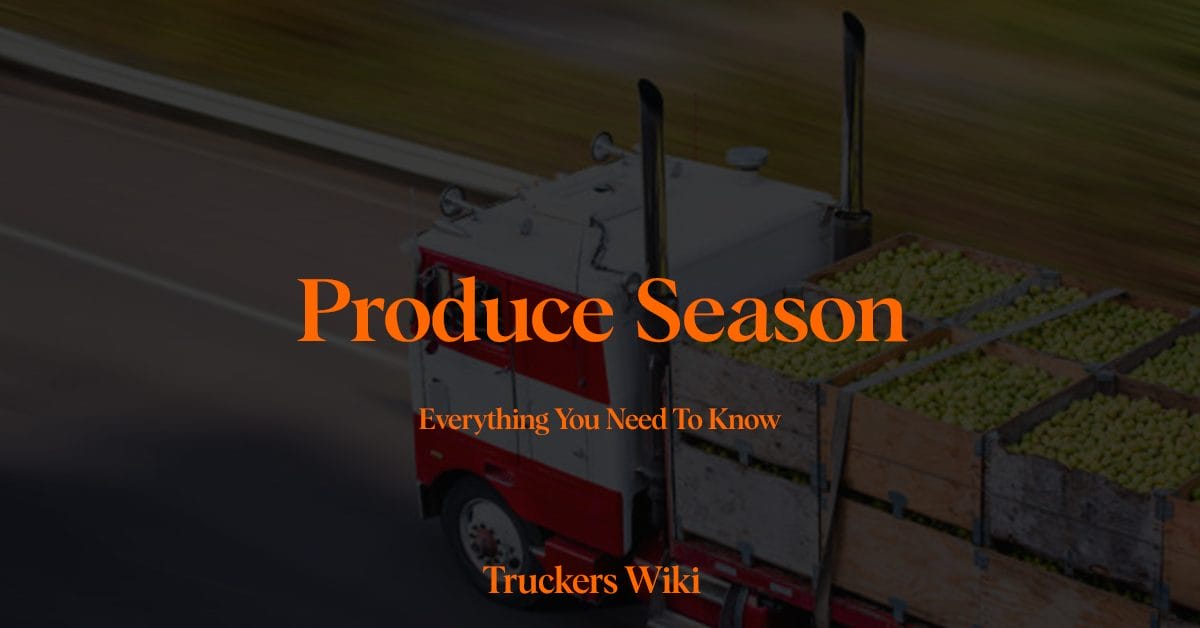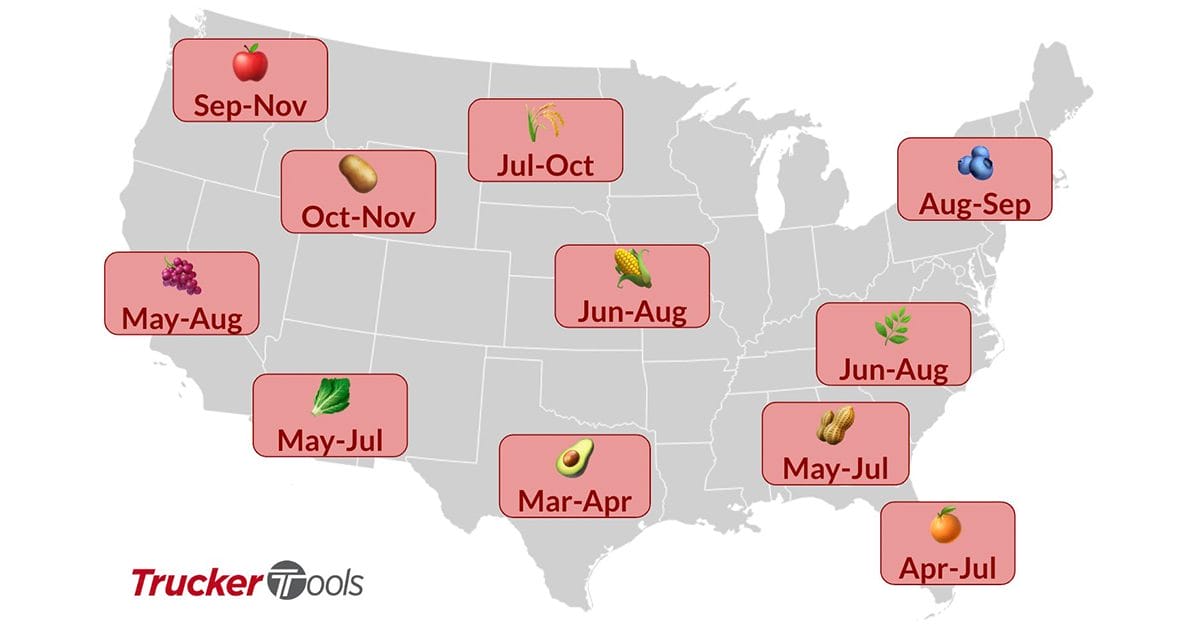
Table of Contents
Produce Season in the Trucking Industry
The produce season impacts transportation and logistics significantly, especially for Consumer Packaged Goods (CPG) shippers, as carriers allocate more trucks for the high volumes of crops being harvested. This can tighten capacity, increase rates, and create challenges for shippers unprepared for the seasonal changes. The season typically begins in late spring and extends to mid-summer, starting in warmer regions and moving northward. It affects transportation performance and costs, even for those not dealing with produce directly.
Refrigerated transport, crucial for preserving the short shelf life of produce, becomes highly sought after. Planning ahead by securing capacity with logistics providers who have extensive networks can mitigate the impact of seasonal fluctuations.
Different states experience the produce season at various times due to their specific predominant crops. For instance:
- Southern states like Alabama and Florida see activity spikes due to crops like corn and oranges, beginning as early as April and lasting through July.
- Western and Southwestern states like Arizona and California have their peak times from May to August, mainly due to crops like lettuce and grapes.
- Midwestern and Northern states like Illinois, Indiana, and Iowa encounter their highest produce movements later in the year, often from June through October, primarily for corn and soybeans.
Kary Jablonski on Produce Season
March marks the unofficial start of the PRODUCE SEASON, spanning until July (followed by the northern harvest). Produce season has very specific impacts on certain parts of the country at certain times as produce crops are harvested and shipped.
Here is a couple of quick must-knows.
South to North
Not all produce is harvested at the same time… fruits and vegetables that are grown in Mexico and the southern/western US are moved earlier in the year while vegetables grown in the middle of the country peak later in the spring and summer.
State-Level Volume Spikes
Some analyses suggest that outbound volume in Florida can rise as much as 30% during the spring. Understand produce-specific harvest schedules to inform your geographic capacity planning.
Inbound v. Outbound Imbalance
Truckload demand will shift across the country to hot spots for different produce (like Florida, Texas, and Washington state). Markets that are usually your backhauls may become your headhauls during very specific weeks and vice versa. Be prepared for these micro-capacity shifts several weeks in advance.
Reefers in Demand
Of course, produce has a short shelf life and can be extended through refrigeration. Start shoring up your reefer network now to make sure you’re ready to take advantage when things get tight!
We want to thank Kary Jablonski [of Trucker Tools] for sharing this amazing info!

A Word from the Author
I’m honored to be the CEO of Trucker Tools, the leading load tracking, carrier sourcing, and digital booking platform for brokers and carriers. Since we launched our mobile app in 2009, we’ve always been focused on making the lives of carriers and brokers more streamlined and simple. Our mission is to help them scale their business by digitizing their interactions and automating workflow.
KARY JABLONSKI
CEO of Trucker Tools
Last modified: March 15, 2024

